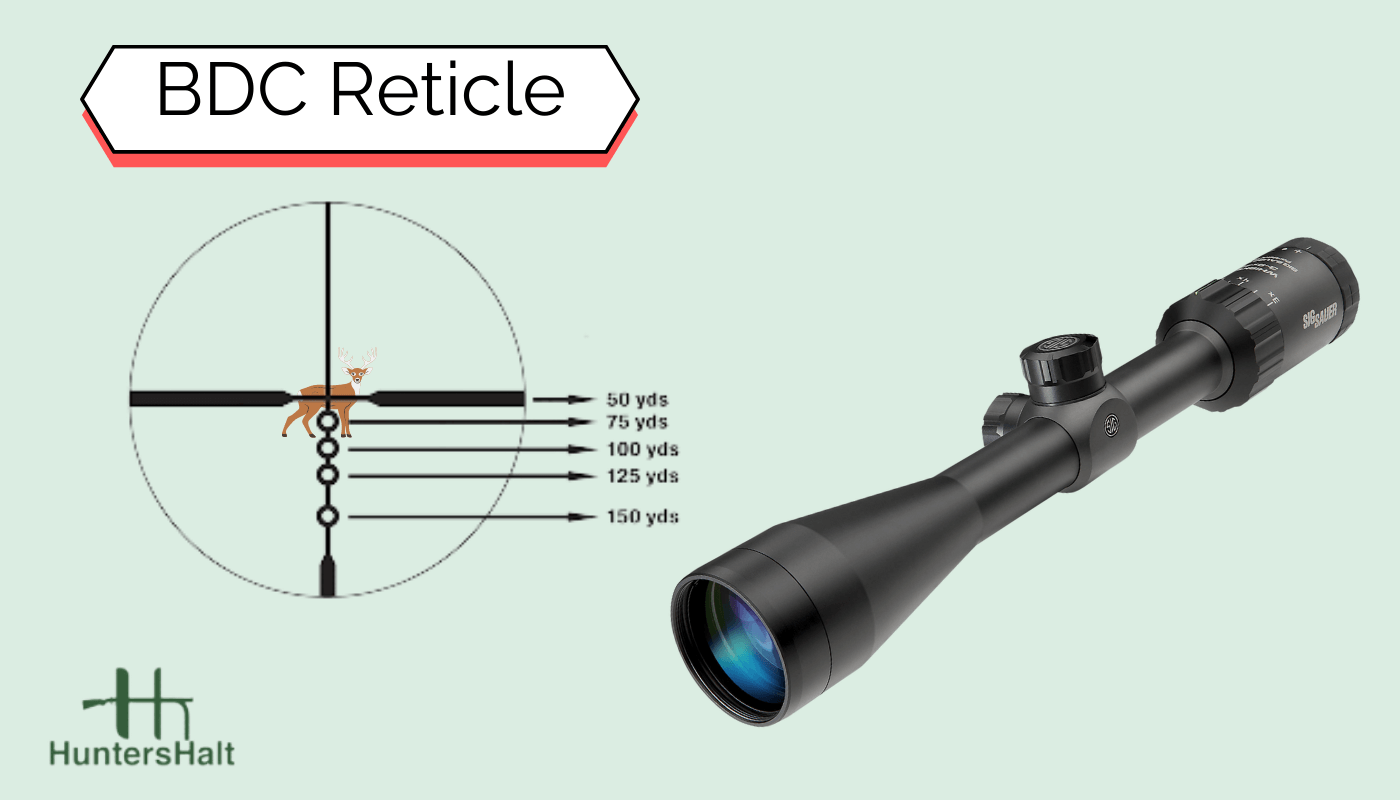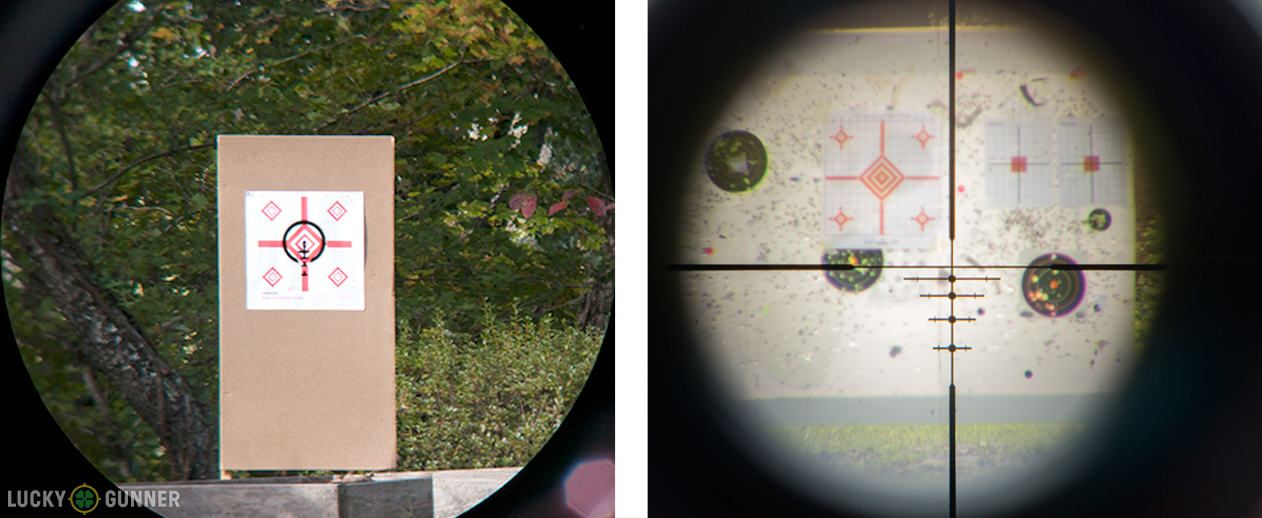Uses of Bullet Drop Compensation (BDC)
The Bullet Drop Compensation (BDC) feature in Nikon rifle scopes is a type of reticle that helps shooters account for the effect of gravity on a bullet over long distances. When a bullet is fired, it doesn’t travel in a straight line but follows a curved trajectory due to gravity. The BDC reticle has several horizontal lines or dots below the central crosshair, each representing a specific range distance. By using these markers, shooters can aim more accurately at targets that are farther away.

Zeroing the Scope
The first step in using the BDC feature is to zero the scope at a specific distance. This is usually done at 100 yards, which is a common distance for many shooting activities. Zeroing the scope means adjusting the scope so that the bullet hits exactly where the main crosshair is pointing at this distance. This process involves firing several shots at a target, checking where the bullets hit, and then adjusting the scope’s windage and elevation settings until the bullets are hitting the target accurately. This is a crucial step because it establishes the baseline for using the BDC reticle.

Identifying the Target Distance
The next step is to identify the distance to the target. This can be done using various methods. Some shooters might use a laser rangefinder, which can accurately measure the distance to a target. Others might use a map or other geographical information to estimate the distance. And experienced shooters might be able to estimate the distance based on their knowledge and experience. Knowing the distance to the target is crucial for using the BDC reticle effectively.

Using the BDC Reticle
Once the shooter knows the distance to the target, they can use the BDC reticle to adjust their aim. The BDC reticle has several horizontal lines or dots below the central crosshair, each representing a specific range distance. So if the target is 200 yards away, the shooter would use the first marker below the central crosshair. If the target is 300 yards away, they would use the second marker, and so on. This allows the shooter to account for the effect of gravity on the bullet over long distances, improving their accuracy.
Firing the Shot
After adjusting their aim using the BDC reticle, the shooter is ready to fire the shot. They can aim at the target using the appropriate marker on the BDC reticle, and then fire the shot. The BDC reticle helps to ensure that the bullet will hit the target, even at long distances where the bullet drop due to gravity can be significant. This can improve the shooter’s accuracy and confidence, making the shooting experience more enjoyable and successful

How the BDC feature might be used:
- Hunting at Varying Distances: Imagine a hunter in the wilderness, tracking a deer. The hunter has zeroed their Nikon scope at 100 yards, a common practice for many hunters. Suddenly, a deer appears in a clearing, but it’s 300 yards away – much farther than the distance the scope was zeroed for. Instead of guessing how much higher to aim to compensate for bullet drop, the hunter can use the BDC reticle. They simply aim using the third marker below the central crosshair, which represents 300 yards. This allows the hunter to make a precise, ethical shot, ensuring a quick and humane kill.
- Target Shooting: A sport shooter is at a range practicing for an upcoming competition. The range has targets set up at various distances to simulate the conditions of the competition. The shooter uses the BDC reticle to quickly adjust their aim for each target. For a target at 200 yards, they use the first marker below the central crosshair. For a target at 400 yards, they use the fourth marker. This allows the shooter to practice shooting at different distances, improving their accuracy and speed, which are crucial for competitive shooting.
- Sniping: In a military scenario, a sniper is positioned on a hill overlooking a valley. They need to be able to hit targets at various distances quickly and accurately. The sniper uses the BDC reticle to adjust their aim for each target. For a target at 500 yards, they use the fifth marker below the central crosshair. This allows the sniper to make accurate shots at varying distances quickly, which can be crucial in a military operation.
- Pest Control: A farmer is dealing with a pest problem on their property. A group of pests is causing damage to their crops, and they appear at a distance of 200 yards. The farmer uses a Nikon rifle scope with a BDC reticle to deal with the pests. They adjust their aim using the first marker below the central crosshair, which represents 200 yards. This allows the farmer to accurately target the pests, protecting their crops and livelihood.
- Competitive Shooting: A competitor in a shooting competition needs to hit targets at various distances as quickly as possible. The competition involves targets at 100, 200, 300, and 400 yards. The competitor uses the BDC reticle to quickly adjust their aim for each target. They use the main crosshair for the 100-yard target, the first marker for the 200-yard target, the second marker for the 300-yard target, and so on. This allows the competitor to make accurate shots quickly, helping them achieve a high score and potentially win the competition.
